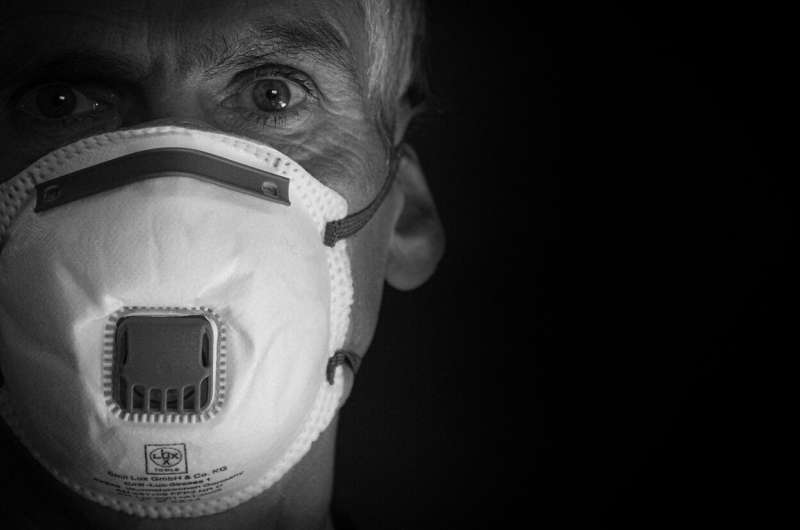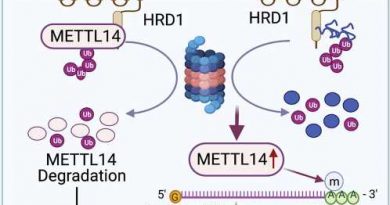Alarmist reporting on COVID-19 heightens anxieties and drives vaccine hesitancy

From an ethics perspective, it has been a bad couple of weeks for media coverage of COVID-19.
First, there was a highly questionable story in The Australian about China allegedly weaponising coronavirus, with the headline “‘Virus warfare’ in China files” splashed across the front page.
The author of the article, Sharri Markson, claims a document written by Chinese scientists and Chinese public health officials in 2015 discussed the weaponisation of a SARS coronavirus.
According to the article, the document was headed “The Unnatural Origin of SARS and New Species of Man-Made Viruses as Genetic Bioweapons.”
Markson reported the US State Department had obtained the document in the course of investigating the origin of COVID-19. In her article and others that followed, there was talk of a third world war in which biological weapons would be deployed.
However, Chengxin Pan, an associate professor at Deakin University, offered a different explanation for the document’s origins. He said in a tweet the document Markson cited was in fact a book, the contents of which could be found on the internet or at a Chinese online bookstore.
Dominic Meagher, an economist at the Lowy Institute with an extensive China background, tweeted the book was “pretty clearly an idiotic conspiracy theory about how the US and Japan had introduced SARS to China.”
The ABC program Media Watch raised these questions and more about the article’s credibility.
Markson has replied that the Chinese Foreign Ministry and Global Times newspaper viewed the document as legitimate and not a conspiracy theory. She said while none of the critics quoted by Media Watch were bioweapons experts, she had interviewed multiple high-level specialists in biological weapons compliance.
The ethical problems here are twofold. First, there are clearly questions about the provenance of the document. Was the document uncovered by a US State Department investigation or is it a book available for public sale?
It is a basic fact that colors the entire article, and the questions are not resolved by Markson’s response.
Second, the way the story is framed as revealing Chinese weaponising of biological material is highly alarmist. This generates further public anxiety about COVID-19 and adds to the climate of Sinophobia in Australia. The justification for doing so is, on the available evidence, highly questionable.
In a pandemic or any other emergency, the first ethical duty of the media is to report accurately and soberly, and specifically not to induce unjustified anxiety or panic.
Naming and shaming
In another major ethical lapse, the Australian Financial Review ran a story that named and shamed a Sydney man who had tested positive for the virus. To make it worse, the newspaper put his photo on the front page.
This was wrong and irresponsible for several reasons.
The man had visited several barbecue shops across Sydney while unknowingly positive. When this became known as part of the media’s general contact-tracing publicity, he was dubbed “Barbecue Man” by the Sydney media.
So he was already a figure of fun when the Financial Review identified him. Its excuse for naming him? He was a financial analyst doing due diligence on the Barbecues Galore chain. The AFR’s editor-in-chief, Michael Stutchbury, claimed this meant it was in the public interest to identify him as carrying COVID.
That is absolute drivel. There is no rational connection between the man’s health and the health of the barbecue business.
Other media, including the Daily Mail and news.com, jumped on the bandwagon and named him, too. Both outlets even ran a photo grabbed from Facebook of the man and his wife. No moral compass whatever.
If the media go on doing this, it will discourage people from coming forward for testing. Who wants to see themselves plastered over the front page and given names like Barbecue Man? That is where the irresponsibility lies.
The Age was guilty of something similar a couple of months ago when it published a map of the weekend movements of a young man who was unwittingly COVID-positive and wrote an article holding him up to ridicule.
This kind of media behavior is medieval: like putting people in the stocks and chucking rotten tomatoes at them. And it is a gross breach of privacy. A person’s health is among the most private classes of information that exists. To breach it for the sake of a cheap laugh is indefensible.
Avoiding misleading information
These weren’t the only problematic reports. On May 13, the Australian Press Council found a subhead in the Herald Sun saying “Six People Died During Pfizer Trial” was misleading because it implied the vaccine caused the deaths, when in fact the deaths were not related to the vaccine.
Four of the six deceased had been given a placebo during the trial, and the other two deaths were not related to the vaccine.
The Herald Sun defended the subhead on the basis the story said the US Food and Drug Administration had been told about these deaths because they occurred during the period of the trial.
That is materially different from implying—as the headline clearly did—that the vaccine caused the deaths.
The press council said that newspapers needed to take more than usual care to avoid misleading the public in the midst of a pandemic. And by failing to do so, the Herald Sun had breached two of the council’s principles—one concerning accuracy and the other concerning fairness and balance.
In an atmosphere where there is already a degree of resistance to being vaccinated, the Herald Sun subhead was clearly a beat-up with the potential to harm the public interest.
So, in the space of a couple of weeks elements of the print media have sought to capitalize without justification on public anxieties about China and the safety of COVID vaccines, and have pilloried an innocent man while at the same time committing a gross breach of his personal privacy.
Source: Read Full Article



